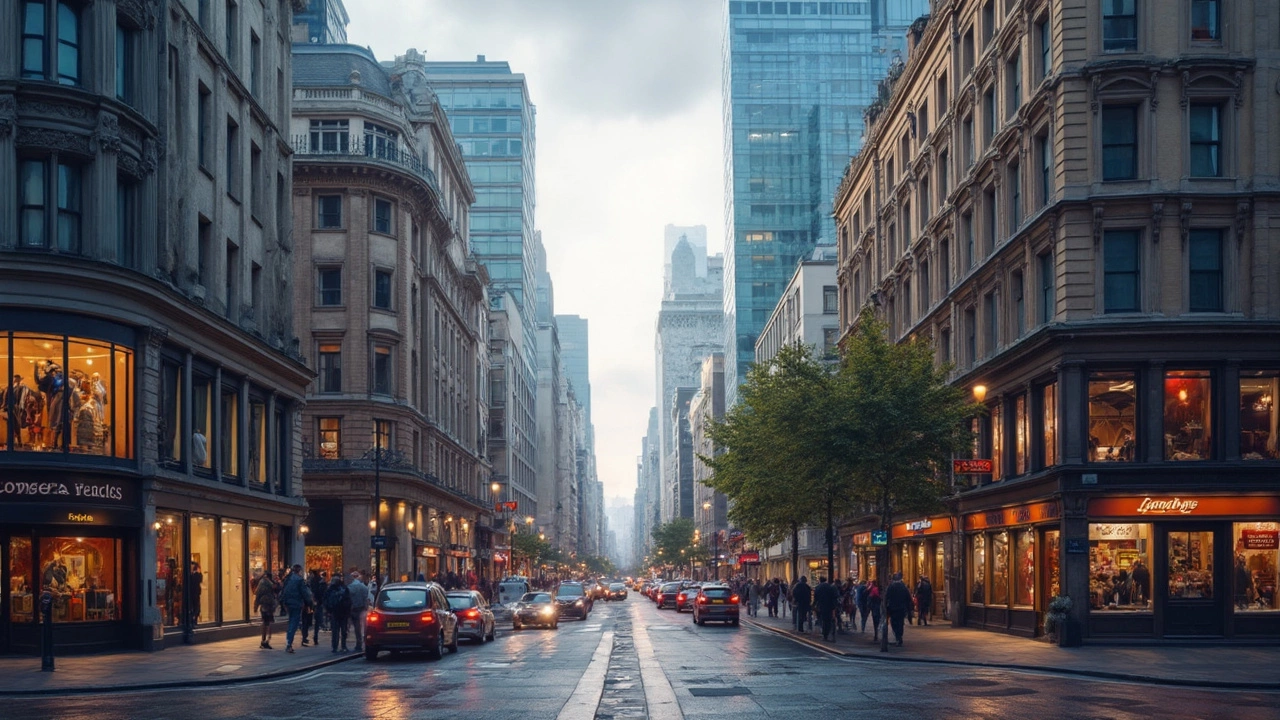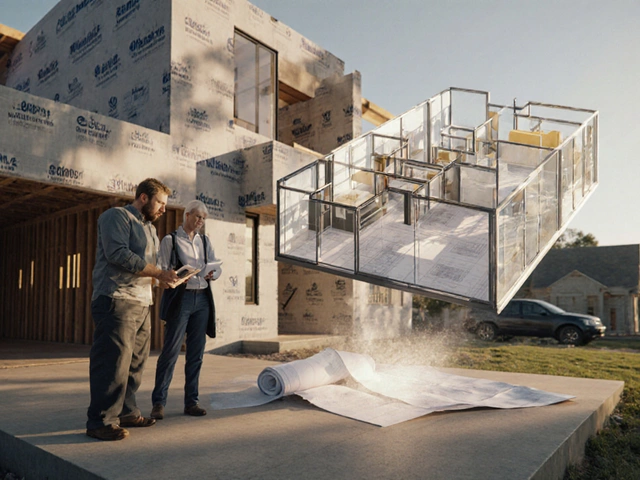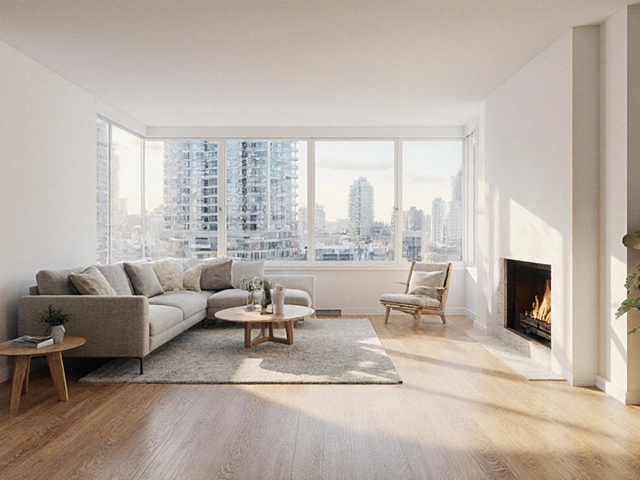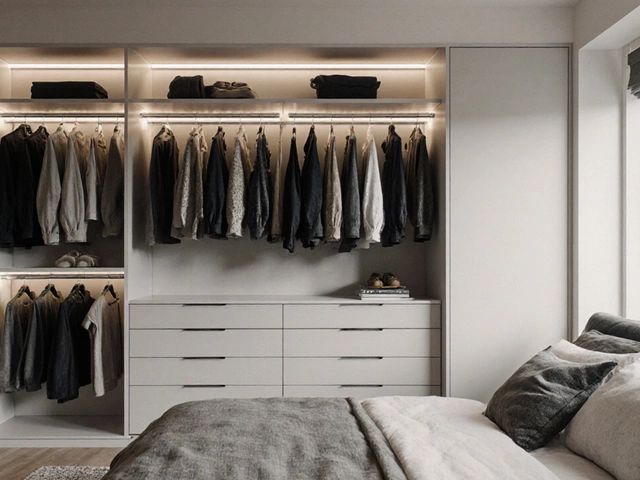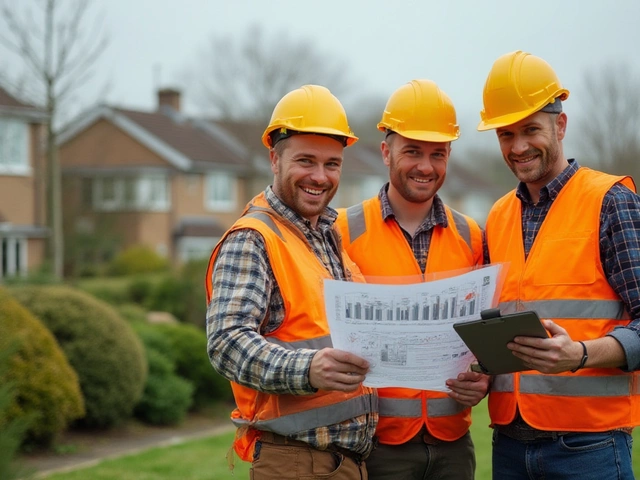Ever wondered what makes a building commercial, and not just another spot to hang your hat? It boils down to usage and design, folks. Commercial buildings are primarily set up for business activities—that means spaces buzzing with buyers and sellers, not just homebodies lounging around.
From supermarkets to skyscrapers full of offices, if it’s built for making money, it's likely a commercial structure. But there's more to it than the hustle and bustle; these buildings follow specific building codes and regulations. Without these, they'd be just like any other building in the block. So, how exactly do they differ? And why should you care, especially if you’re in the business of building or investing?
Knowing the ins and outs of commercial properties can give you a leg up in the real estate game or construction industry. Whether you're an entrepreneur looking to lease a space or a developer planning your next big project, understanding the nuances of commercial buildings isn't just useful—it's essential. We'll dig deeper to uncover all this, so stick around!
- Defining Commercial Buildings
- Types of Commercial Properties
- Key Features and Standards
- Construction and Zoning Considerations
- Practical Tips for Commercial Spaces
Defining Commercial Buildings
So, what exactly makes a building commercial? The main thing is its purpose. A commercial building is constructed and used primarily for business activities. That could mean anything from selling products in a retail store to closing deals in an office setting. Essentially, if money is exchanging hands, the building most likely falls under the commercial category.
Unlike residential buildings where homes and apartments provide living spaces, commercial properties serve business needs. This distinction impacts how these buildings are designed, built, and operated. For instance, commercial spaces often include wide-open areas like showrooms or office floors, which are quite different from the intimate settings of a home.
Now, it’s not just the purpose that sets them apart; it’s also the regulations they abide by. Zoning laws and building codes are stricter for commercial spaces compared to their residential cousins. They have to meet various safety standards, fire codes, and accessibility requirements, among others.
Common Types of Commercial Buildings
- Offices: These are spaces where people do administrative or managerial work. You know, places where folks wear ties.
- Retail Spaces: Think malls, shops, and boutiques. If you can browse or buy something, you’re likely in a commercial retail property.
- Warehouses: Used for storage or distribution of goods, warehouses are crucial in the supply chain.
- Restaurants: These spaces offer dining services, from casual settings to fancy dining.
- Industrial Buildings: Often used for manufacturing or heavy production activities.
Fun fact: Did you know about 30% of commercial buildings in the U.S. are over 50,000 square feet? Now that's a lot of room for business!
Understanding the construction of these buildings can open doors—literally and figuratively. If you’re keen on diving deeper, make sure to check out considerations around zoning and design in our next section.
Types of Commercial Properties
When we talk about commercial buildings, we're not just talking about one-size-fits-all structures. There's a whole spectrum of properties designed for different business needs. Let’s break down some of the main types you'll encounter.
Office Buildings
Office buildings are pretty much the backbone of business property. Ranging from small suburban office parks to towering city skyscrapers, these spaces cater to every kind of business, from startups to corporate giants.
Retail Spaces
Retail properties include everything from high-end shopping malls to tiny boutique shops. Whether you're hunting for the latest phone or just a quick snack, you’ll find these commercial properties scattered throughout every city.
Industrial Properties
These buildings are where the magic happens—think distribution centers, factories, and warehouses. Industrial properties are usually located on the outskirts of a city and have specific needs like easy access to major transport routes.
Mixed-Use Developments
These are the jack-of-all-trades in the commercial world. Mixed-use developments combine residential, commercial, and even industrial spaces into one. You could live above a coffee shop while shipping products from the warehouse down the street—all in the same development!
Hotels and Hospitality
From business trips to family vacations, hotels are a key part of the commercial real estate market. These properties are as varied as their guests, running the gamut from cozy inns to sprawling resorts.
Data Centers
We’re living in a digital world, and data centers are the fortress securing it all. As the demand for cloud storage continues to explode, so does the commercial real estate dedicated to housing our digital lives.
| Type | Percentage of Total Commercial Real Estate (%) |
|---|---|
| Office | 40% |
| Retail | 30% |
| Industrial | 20% |
| Mixed-Use | 5% |
| Hotels | 3% |
| Data Centers | 2% |
Understanding these types of properties can help anyone in the real estate game to better target their investments or business strategies. Each type comes with its own set of benefits and challenges, so choosing the right property type is crucial for success.

Key Features and Standards
So, what exactly makes a commercial building stand out? Well, to start with, these structures have very distinct features that cater specifically to business needs. It's not just about putting up walls and a ceiling.
Design and Infrastructure
The design of a commercial building is crucial. They often have open floor plans, flexible spaces, and robust infrastructure to support a variety of business activities. Think about loading docks for easy shipment handling or ample parking spaces to accommodate both staff and customers.
Building Codes and Accessibility
Commercial buildings abide by strict building codes and zoning laws. This ensures that the buildings are safe and functional for public use. The Americans with Disabilities Act (ADA), for instance, is a biggie—requiring accessibility features like ramps and elevators to accommodate everyone.
Utility and Efficiency
Energy efficiency is another hallmark. Modern commercial properties are designed to minimize energy use, featuring effective insulation, efficient lighting systems, and energy management mechanisms. It’s not just about being eco-friendly; it's also about saving on operational costs.
Security and Technology
Security is key. A good commercial building features advanced security systems, from surveillance cameras to high-tech entry controls. Plus, in today's digital age, robust tech infrastructure—like high-speed internet and network capabilities—is non-negotiable for most businesses.
Comprehensive Stats
Let's sprinkle in some numbers for perspective:
| Feature | Percentage of Commercial Buildings Implementing |
|---|---|
| Energy Efficiency Systems | 68% |
| ADA Compliance Features | 92% |
| Advanced Security Systems | 85% |
As you can see, these features aren't just optional add-ons. They're essential elements that define a commercial building and ensure it meets the needs of businesses and their customers effectively.
Construction and Zoning Considerations
When it comes to building a commercial building, understanding local zoning laws is where you start. These legal guidelines determine what can actually be built on a parcel of land, and they can vary significantly from one place to another. If you’re eyeing a plot of land for your dream office or shop, you need to be zoning-savvy.
Understanding Zoning Laws
Here's the deal: zoning laws break down an area into different sectors like residential, commercial, industrial, and agricultural. The commercial zone is where the money makers go, but not all commercial areas are created equal. Some might be suitable for office spaces, while others cater to retail outlets. Get this wrong, and you might end up in hot water with the local authorities.
For example, a prime spot for a retail store in NYC might not suit an industrial operation. Knowing the zoning laws is crucial before you even think about breaking ground on a commercial construction project.
Building Codes and Standards
Along with zoning laws, construction of business property must adhere to strict building codes. These rules exist to keep everyone safe and ensure structures are sound. We're talking about standards for things like electrical systems, fire safety, and even ventilation. You wouldn’t want to skip on these; fines and shutdowns are no joke!
Building codes ensure that the property does its job effectively and complies with regulations. It’s not just about erecting walls and a roof—it’s about creating a space that meets specific business needs while keeping everyone safe.
Tips for Navigating the Construction Process
- Do Your Homework: Learn the zoning restrictions and building codes inside and out. Ignorance isn’t an excuse, and it could cost you dearly.
- Consult an Expert: Engage with architects and contractors who know the local rules. They can help streamline the process.
- Plan for the Future: Consider what future zoning changes might hold for your area, as this can affect property value.
Taking these steps seriously will make your journey into the world of real estate a whole lot smoother. Whether you’re building a small retail store or a towering office block, getting the zoning and construction specifics right is your first major hurdle to overcome.

Practical Tips for Commercial Spaces
Diving into the world of commercial building spaces, it’s clear there’s plenty to think about. Whether you’re planning to build or lease, getting the most bang for your buck is what matters. So, let’s keep it simple and actionable!
1. Location is Key
This sounds cliché, but for businesses, location isn’t just a backdrop; it’s everything. You need to think about accessibility—how easy it is for your customers and staff to get there. High foot traffic areas can mean more business, especially for retail setups.
2. Build with Flexibility in Mind
Businesses evolve fast. So, your commercial space should too. Create designs that allow for easy modifications. Think of adjustable walls or scalable tech setups. Keeping it adaptable means the space can adjust to your changing needs without significant new investments.
3. Mind the Regulations
Zoning laws can be tricky. Before knocking down a wall or adding an extra story, check the local zoning codes. They can influence everything from the outward appearance to the type of business property you can run.
| Key Regulation Focus | Description |
|---|---|
| Zoning Laws | Defines land use and layout. |
| Building Codes | Standards for construction safety. |
| Accessibility | Ensures access for all individuals. |
4. Tech and Sustainability Go Hand in Hand
Commercial spaces need robust tech infrastructure. But don’t forget about sustainable technology. Energy-efficient lighting, smart thermostats, and solar panels not only cut costs in the long run but also appeal to eco-conscious customers.
5. Design for Productivity
How a commercial building is designed affects productivity. Large windows can enhance mood and productivity by flooding spaces with natural light. You might be astounded by how some greenery in the office can boost spirits and efficiency simultaneously.
These tips aren’t just about making a space look nice; they're about making it work well for you and your business ventures. Keep them in mind, and you’ll create a business property that’s not only functional but also profitable.
